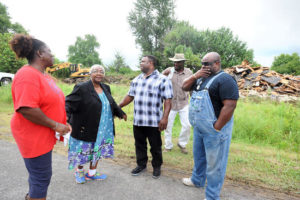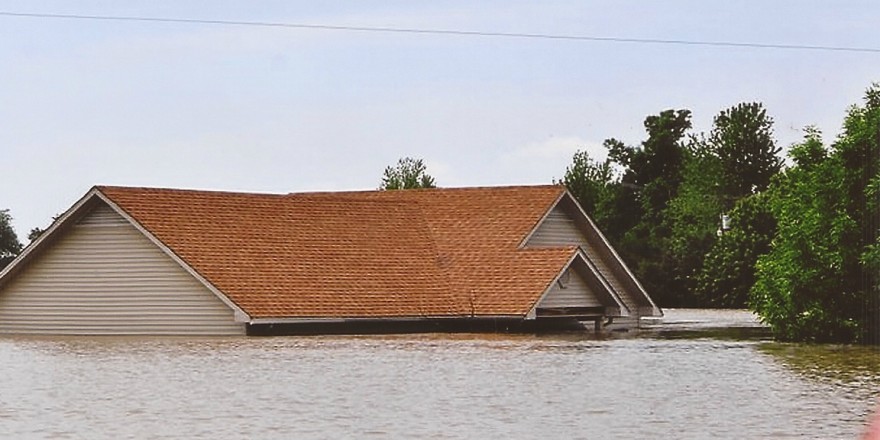“The Mississippi River will always have its own way,” Mark Twain said. “No engineering skill can persuade it to do otherwise.” He’s not wrong. Generations of American hydrologists, farmers, industrialists, and politicians have tried. They succeed for a season or a decade or a human lifetime, but natural history repeats itself: the Mississippi bucks off dams and levees and cutoffs meant to hem it into predictability and flows where it pleases.

By Tyler J. Kelley
Avid Reader Press, 2021; $27
In Holding Back the River, journalist Tyler J. Kelley sets out to explore how efforts to tame America’s great rivers—the Missouri, the Ohio, and above all the Mississippi—inevitably and irrevocably are tied to American success at farming and shipping, even as manmade control systems teeter on the brink of collapse. In chapters dedicated to dams and locks, levees, and sediment, Kelley neatly contrasts historical accounts of Western expansion and Manifest Destiny with reported vignettes of modern plight.
Threading through Holding Back the River is a history of the Army Corps of Engineers. Created in 1802 by Congress, the branch was soon assigned by President Monroe to make the Ohio and the Mississippi Rivers navigable. “The army engineers were among the young nation’s few experts on hydraulics,” Kelley writes, “so it was logical for Monroe to make the Corps responsible for navigation, a mission that grew to include dozens of rivers.” The Corps began by clearing snags bedeviling steamboats, then built locks and dams meant to guarantee towboats and barges smooth passage. “The trip that took Meriwether Lewis more than two months now takes about eight days by towboat,” Kelley writes. Today’s Corps finds itself mired in managing the unmanageable as climate change delivers increasingly unpredictable deluges.
Even when the Corps does avert catastrophe, the consequences can be dire, as Kelley illustrates with Pinhook, Missouri, population 30, a tiny Black farming community founded in the 1940s in the heart of southeastern Missouri’s Birds Point–New Madrid Floodway. The floodway, a government easement, was to be inundated should the Corp need to blow enclosing levees to save cities from flooding. “Those who lived and farmed there knew that their land was, in a way, not truly their own—it was vulnerable, expandable, sacrificial,” Kelley writes. A handful of Black farmers scrabbling out from under sharecropping could only afford floodway land: “Only ground in the floodway seemed to be for sale. And even there, the higher, dryer acres were off limits.” Purchasing tracts of former cypress swamp logged and left muddy, they got to work clearing stumps, digging drainages, and making the land productive.

In 2011, two major storm systems combined with spring snowmelt to inundate the Mississippi and Ohio. Flowing at millions of cubic feet per second, the rivers directed two great “bulges of water” toward their confluence at Cairo, Illinois. Levees seemed certain to rupture on their own, wreaking untold devastation unless the Corps blew them to activate the floodway. As the Corps was holding community meetings and ordering evacuations, the agency neglected to alert Pinhook. Neighboring White communities had days to pack up and get out. Word reached Pinhook about evacuation from relatives and Facebook. The detonation sent a torrent equivalent to four Niagara Falls straight at the hamlet. Afterwards, one resident “found a napkin stuck flat to her ceiling” by the force of the water.
Still, the floodway worked. The Ohio River dropped four feet, enough to save Cairo, while the Mississippi dropped nearly two feet, sparing Caruthersville, Missouri. “An unplanned levee breach anywhere would almost certainly have been worse, in human and economic terms, than the controlled operation of the floodway,” Kelley concludes. Pinhook, shattered, no longer exists.
Time and again, Kelley—and history—offer the answer to so many of the water-management woes besetting the Corps: stop trying to manage great rivers with dams and levees; let their natural ebb and flow resume. Of course, that’s impossible. “A river that overflows its banks and changes its course at will is no place for the immobility of bridges, roads, factories, or power plants, no place for the assumptions of concrete and steel,” Kelley writes. “In the service of capital and private property, the country’s rivers are today held in place by trillions of dollars’ worth of concrete, metal, stone, and earth.” For now. In the end, the river will always have its own way. –Aleta Burchyski writes from Santa Fe, New Mexico.
This story contains affiliate links. If you buy a book through this page, we might get a commission. Thanks!





